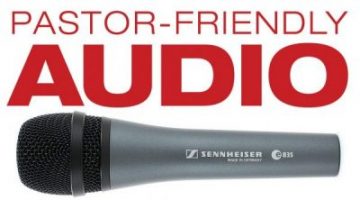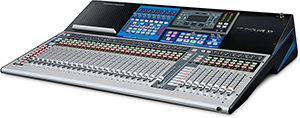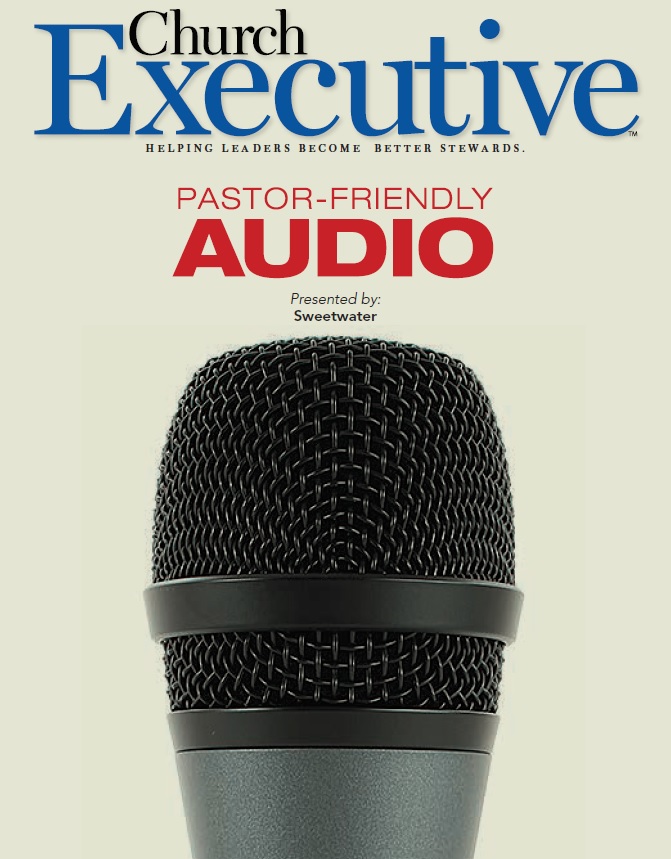
By Jeff Barnett
It’s nearly the end of 2018. It’s going on two decades since the modern worship band movement began sweeping through the church.
In fact, to most Millennials, it’s not “modern” worship; it’s simply worship. As they take the mantle of leadership, more and more congregations are adopting this musical format.
Here are some things to consider when making the transition.
 Worship space adjustments
Worship space adjustments
If your worship center was built before 2000, it’s probably a reverberant space meant to beautify the natural sound of acoustic instruments and voices. Today’s modern worship band instruments work best in rooms that are mostly “dry,” allowing the sound engineer to match the level and depth of reverb time to the space and style of music.
From acoustic panel treatments to “silent stage” techniques, it’s possible to manage the sound of the room to fit your church’s musical style.
Regardless of worship style, it’s critical that sound levels are as even as possible across every seat in the room, and encourage congregational singing. If volume levels are too low, people can become self-conscious and avoid singing out. If they’re too high, it can turn into a distraction and negate the point of gathering for worship.
You also need to take space into account. It might be surprising how much space modern instruments and gear take up on the platform. You might need considerable space for a drum kit and a shield or a cage to manage the sound. Today’s keyboard setups often include laptops and other outboard hardware to manage playback of tracks and other functions. Most guitarists need enough space for their pedalboards and amps.
Adjustments to gear
Changes to the sound system are also likely needed. How will you pick up the sound of the additional instruments and connect them to the sound system? Do you need additional microphones or direct boxes? What about wireless systems for freedom of movement?
 Next is the mixer. You must have enough channels on the mixer to manage all the instruments on stage, including vocalists. A typical modern worship band setup requires up to 32 channels (more for complex setups). Does your mixer have enough aux sends so each musician can have a monitor mix that lets him or her hear what they need to hear?
Next is the mixer. You must have enough channels on the mixer to manage all the instruments on stage, including vocalists. A typical modern worship band setup requires up to 32 channels (more for complex setups). Does your mixer have enough aux sends so each musician can have a monitor mix that lets him or her hear what they need to hear?
New styles of music might require new types of processing — such as reverb, delay and compression. So, a mixer upgrade might be in order.
Consider the system’s volume requirements — do you have enough speakers and amps to power them? Do you have sufficient AC power to supply those amps? A “speech reinforcement” PA system isn’t up to the task of reproducing full-range music.

Consider “stage” volume, too. As the worship band starts to look more like a modern rock band, the volume is likely to creep up. In-ear monitors, guitar amp emulators, and even locating amps off stage can help dramatically.
Let’s talk drums. If you’re using acoustic drums (preferred by most drummers), they’re likely the loudest instrument on stage. If your drummer can’t play to the room, this can create volume problems for the congregation. Also, stage microphones will pick up the sound of the drums, making it difficult to turn up other instrument and vocal mics.
Electronic drums are one solution, but there are also solutions for acoustic drum kits. Drum lessons, lighter sticks, or “stick alternatives” can help.
 Adjustments to the team
Adjustments to the team
Like all artistic pursuits, mixing a band requires practice. Rehearsal time will be critical.
Many musicians aren’t proficient in the art of being in a band — listening to other musicians, following each other, or treating one another with grace. Avoiding a “platform full of soloists” requires thoughtful planning, good musical leadership, discipleship, and lots of rehearsal.
Line check versus sound check — there’s a difference! A line check is a simple test to make sure each microphone or instrument on the platform is plugged in, working, and passing good signal. It can be done with or without the musicians present. This is the tech team’s chance to make sure everything is plugged in, un-muted, and free of noise.
A sound check, on the other hand, requires the band to be present, and it’s the tech team’s opportunity to begin to set levels and dial in the audio mix. It’s the musicians’ opportunity to check and tweak their monitor mixes.
It’s critical to allow an adequate amount of time for both checks before the start of the service.
By now, the requirements of modern musical worship can feel overwhelming, but our specialized team of Sweetwater Sales Engineers is here to help. Many of us are worship leaders, musicians and techs in our own churches, and we understand the complexities of adopting a new musical style.
Jeff Barnett is the Director of House of Worship Sales at Sweetwater. Barnett is an instructor in Sweetwater’s Academy of Music and Technology, teaching live sound techniques. His background includes live sound engineering, recording engineering, system design, and installation. He is also a performing musician, singing in a vocal jazz group. Over the course of his career, Barnett has helped equip thousands of churches and musicians for their ministry.
Call your Sweetwater Sales Engineer at (800) 222-4700 to start the conversation, or go to Sweetwater.com/worship for helpful articles, how-to’s and interviews with leaders from the worship community!


